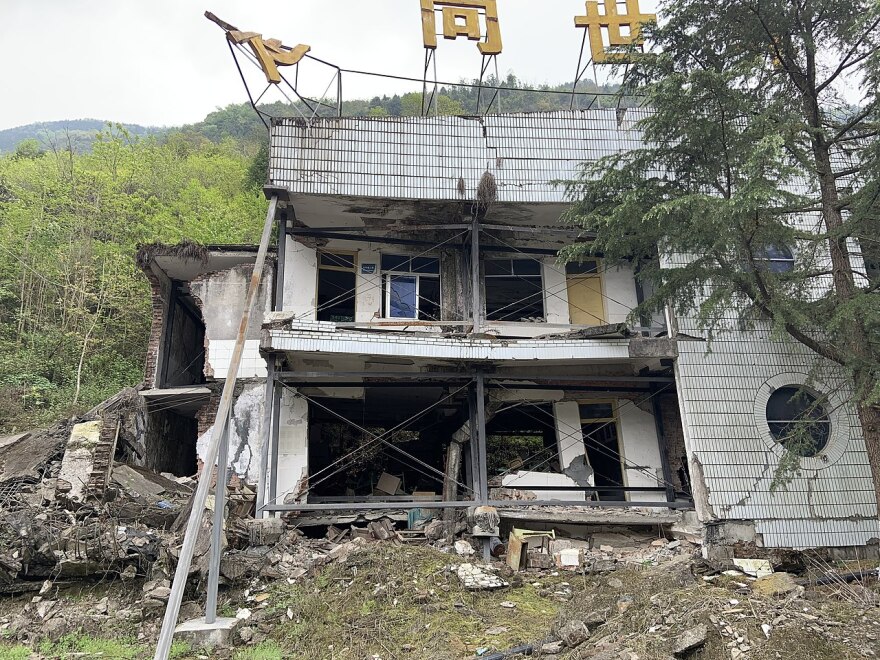Tens of thousands of public school students in Washington state returned to classes this month in school buildings judged to be at risk of collapse in a strong earthquake. A new report to the state Legislature prepared by state geologists and a structural engineering firm gave the lowest possible seismic safety rating to more than 90 percent of the school buildings assessed in a selective statewide survey.
Structural engineers hired by the Washington State Department of Natural Resources visually inspected 561 school buildings over the past four years, assessed the underlying geology and reviewed architectural drawings where available. The report they prepared assigned a star rating to each school ranging from one star on the low end up to five stars for the safest schools.
Ninety-three percent of the school buildings assessed got a one-star structural safety rating. Four percent had two-star ratings and only three percent were rated three-star or better.
"The one-star buildings do mean there is a risk of collapse in multiple or widespread locations in that school building," said Corina Allen, chief hazards geologist at the state Department of Natural Resources and leader of the School Seismic Safety Project.
Allen said the high percentage of deficient, old buildings was "not too surprising" given how the schools in the study were selected.
"We were purposefully looking at higher risk school buildings and schools that were located in high seismic hazard areas and tsunami inundation zones," Allen said in an interview. "The newer schools are expected to perform much, much better in a large earthquake."
Out of the more than 4,000 total K-12 school buildings in use in Washington, the project prioritized for scrutiny those constructed before 1975 when the building code was toughened. Schools in the state's largest district, Seattle, and in nearby Bellevue were not examined because they have already seismically upgraded many of their schools, according to the report's authors.
"We have a significant problem with school safety in this state and the Legislature has to act on it," reacted Jim Buck, an emergency preparedness volunteer who lives west of Port Angeles and formerly represented the Olympic Peninsula in the state House of Representatives.
"This is not something they can punt to a school district and say, 'Well, it's your problem. Go pass a levy.' It's too big," Buck said.
Buck and his wife are so concerned the earthquake risk in schools is being neglected by state budget writers, they took it upon themselves to write a plain English synopsis of the latest report and added a call to action. This week, they emailed or snail-mailed that package to more than 4,000 school administrators, school board members, fire chiefs, county commissioners, PTA members and others across the state to coincide with the start of the school year.
Buck noted that Washington lags far behind Oregon, California and British Columbia in making seismic retrofits to public school buildings. In the past four years, the government of B.C. has approved more than $1.2 billion (U.S. $953 million) in seismic upgrades or replacements at 58 schools province wide, so more than 31,400 students can be better protected at school during an earthquake.
Oregon lawmakers created a seismic retrofit grant program for vulnerable public schools, hospitals, and fire and police stations more than a decade ago. It's funded by the sale of state bonds. As of last year, the program had incrementally awarded more than $456 million in support since the first grant went out in 2009.
Geologist Allen complimented policy makers in her state of Washington for ramping up their support to make school seismic safety upgrades in the wake of what are now two studies showing drastic risk from earthquakes in school buildings. Washington DNR previously published a risk analysis in 2019 based on an initial round of structural surveys at schools.
"I think these studies have made a difference," Allen said. "There is a long way to go. We have a lot of catch up to do in order to seismically retrofit all the schools that need it."
The Washington Legislature included $40 million in the current two-year state construction budget for a dedicated grant program for school seismic retrofits administered by the Office of the Superintendent of Public Instruction. That represents an increase from the $13 million allocated in the prior 2019-21 budget cycle.
Former legislator Buck called those spending numbers "budget dust" compared to the amount of need and the overall state budget. Buck was particularly incensed that the Legislature budgeted more money to renovate the capitol campus where lawmakers work in Olympia -- $100 million over the next two years -- than on seismic upgrades to the buildings where children go to school.
The School Seismic Safety Project's latest report described three sources of earthquake risk in the Pacific Northwest. The best known is the offshore Cascadia fault zone, the origin of catastrophic magnitude 8 to 9 megaquakes popularly known as "the Big One" that occur roughly every 300 to 600 years.
The Northwest also experiences earthquakes of up to magnitude 7 from shallow crustal faults that affect smaller geographic areas on both sides of the Cascades. The most common strong earthquakes in the region are slightly deeper temblors that originate in the slab overlying the subduction zone. The magnitude 6.8 Nisqually Quake in 2001 is a good example of one of these. This summer's school seismic safety report to the legislature estimated there is an approximately 85 percent chance of another deep slab earthquake in Washington state in the next 50 years, based on research done by the U.S. Geological Survey.


